Last updated: February 13, 2025
Article
Visit African American Archeology
Archeology is important for discovering African American history, because it captures information that is not recorded in historical documents. Visit archeological places that tell the story of African Americans from colonial times to the recent past.
Some places in this guide are units of the National Park Service. Others are listed on the National Register of Historic Places or are National Historic Landmarks, signifying their importance in telling America's stories. All of them impart the richness of African American archeology and its role in capturing a full picture of American history.
Southeast
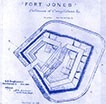

Cane River Creole National Historical Park in Natchitoches, Louisiana includes the Oakland and Magnolia plantations. In the 18th- and 19th centuries, the plantations' owners relied on enslaved peoples' labor to produce cash crops such as tobacco and cotton. Following the Civil War, many slaves became tenant farmers, sharecroppers, and day laborers. Archeology evidences the transition from slavery to tenancy.


Kingsley Plantation at Timucuan Ecological & Historic Preserve on Fort George Island, Florida was owned by Zephaniah Kingsley and his wife Anna Madgigine Jai. Anna was a slave turned slaveowner. Over 200 slaves produced cotton, sugar, and other crops. Twenty five tabby cabins stand where enslaved people lived.
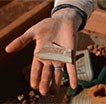
Thomas Jefferson's Monticello near Lynchburg, Virginia was home to hundreds of individuals, both black and white, free and enslaved. Archeology shows the multitude of experiences of people who lived at Monticello and its grounds. The Archeology Department hosts the Digital Archeological Archive of Comparative Slavery (DAACS) database.

Mid-Atlantic
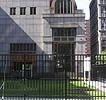
African Burial Ground National Monument on Manhattan, New York was where an estimated 15,000 people were buried between the mid-1630s and 1795. It is the earliest and largest African-American cemetery known today. The burials included some of the earliest African-Americans living and working in New York City.




The James Dexter Site in Independence National Historical Park in Philadelphia, Pennsylvania represents a well-known leader of the African-American community within the 18th-century city. He helped found the Free African Society and the African Episcopal Church of St. Thomas. View the excavation site where Dexter's home stood.
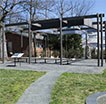

Sukeek's Cabin is within Jefferson Patterson Park and Museum, St. Leonard, Maryland. Sukeek was brought to the United States in the early 1800s. Her cabin site represents Sukeek’s descendants’ first home as free people in the late 19th through early 20th century. Archeology documents the family's change from enslaved to free.

Seneca Village in Manhattan, New York was a community of free African Americans and Irish and German immigrants circa 1825-1857. Among the city's 19th-century Black communities, it was relatively prosperous, with churches, a school and high rates of property ownership. Archeology tells the community's tale.
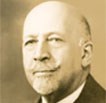
Midwest

Brown v. Board of Education National Historic Site in Topeka, Kansas features Monroe Elementary School, a school in the landmark Supreme Court case that ruled racial segregation of public schools illegal. Archeologists investigated the working-class neighborhood surrounding the school to learn about life during this period.


New Philadelphia National Historic Site in Pike County, Illinois is where Frank McWorter bought a large tract of land near the Mississippi River in 1836. He sold plots to other African Americans and together they formed the first free settlement west of the Mississippi. Archeology identified the town layout and activities.

West

Southwest

